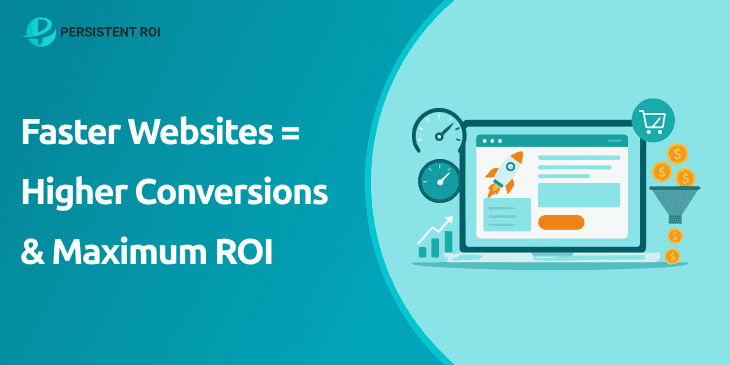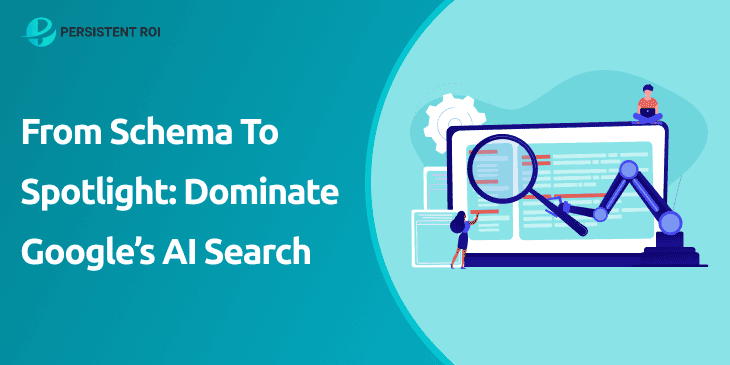When a page loads quickly, people stay longer, click more, and trust the brand. Slow pages often push visitors away before they even see what you offer.
In fact, pages that load in one second have an average bounce rate of only 7%, while at five seconds, that number jumps to 38%. Search engines also prefer faster sites, which means better visibility and more traffic.
Understanding how website speed affects both users and business results shows why it deserves attention from every company that wants to grow online.
Why Does Website Speed Matter?
Website speed shapes how people feel about your site from the very first click. A smooth and fast experience makes visitors feel in control. A laggy or broken experience makes them lose patience. This simple difference decides if someone becomes a customer or leaves.
User expectations
Most people today expect a page to load in less than three seconds. If a site takes longer, the chance of them leaving rises quickly. Studies show that even small delays can lower interest. For businesses, this can mean losing valuable traffic and sales.
Impact on website conversions
Fast-loading sites make it easy for people to act. That may mean buying a product, filling out a form, or signing up for a newsletter. Each second of delay reduces website conversions. A quick page supports clear decision-making and helps people complete actions with less effort.
Role in search visibility
Search engines reward speed because it improves the user experience. Faster websites often rank higher, which means more people can find them. More visibility creates more opportunities to convert traffic into sales or leads.
Tools for understanding performance
Using a website speed checker helps track progress and spot issues. These tools highlight loading times, server response, and areas that need performance optimization. Regular checks keep sites healthy and ready for growth.
What Happens When a Site is Too Slow?
Impact of Page Load Time on User Behavior and Business Results
| Page Load Time | Bounce Rate | Conversion Rate | User Reaction |
| 1 second | ~7% | Highest (baseline) | Smooth, engaging experience |
| 2 seconds | ~9% | Slightly lower | Still acceptable for most users |
| 3 seconds | +32% higher than at 1s | Noticeable drop | Many start leaving if not hooked quickly |
| 4 seconds | ~24%+ bounce rate | Under 1% average | Users grow frustrated |
| 5 seconds | ~38% | ~0.6% | Nearly half of users leave |
| 6–7 seconds | 50%+ | Very low | Most visitors abandon site before viewing content |
A slow site quickly turns potential customers away. Each second of waiting increases frustration, which leads to higher bounce rates and fewer sales. Slow loading times also affect how search engines evaluate your site, lowering its visibility.
Effects on users
Visitors expect fast results. A lagging site interrupts browsing and makes tasks feel harder. Many leave before the page even finishes loading. This creates lost opportunities for brands that depend on digital traffic.
Loss of revenue
Slow websites often cost businesses real money. Delays lower conversions, which means less income from purchases, ads, or subscriptions. They also increase ad waste. For example, businesses running ads with PPC tools pay for clicks, but if the site is too slow, those paid visitors may exit without taking action.
ROI of the website
Speed has a direct link to return on investment. If traffic grows but the site underperforms, companies see fewer sales and weaker results. Improving load times supports the ROI of website projects by turning more clicks into outcomes.
Impact on marketing funnels
Slow sites disrupt lead generation funnels. Visitors may abandon steps in the process before finishing. This lowers the total number of leads and hurts long-term business growth.
Want to boost your ROI with speed? Start with a free review from Persistent ROI.
Can Faster Speed Really Make a Difference?
The answer is yes. Speed has been tested across industries, and the results show real, measurable improvements in sales and engagement when load times go down.
Conversion lifts
Research shows that even a small boost in speed can increase sales. For example, shaving off just 0.1 seconds can lift conversions by several percent. Faster experiences encourage people to complete actions, whether that’s adding items to a cart or submitting contact details.
Growth opportunities
When companies improve website speed, they open doors to more traffic, stronger visibility, and better conversions. These changes lead to long-term business health. A fast site makes campaigns more effective, lowers wasted ad spend, and strengthens customer trust.
Tools and technology
Modern tools make it easier to measure gains. Marketers and developers can pair traditional speed testing with newer methods, such as AI-driven conversion rate optimization. These systems analyze patterns in user behavior and suggest steps for stronger results.
The bigger picture
Speed fuels website performance across many areas. From faster checkout to better engagement with mobile users, the benefits stack up. Treating speed as part of performance optimization creates value across all digital channels.
How Optimizing Website Performance Boosts Conversions and ROI
When people talk about growing a business online, they often focus on ads, social media, or fancy design. Those things matter, but one factor connects them all: website performance.
“A site that loads quickly, runs smoothly, and responds without delay gives visitors the confidence to stay, click, and buy.”
Here’s exactly how improving speed and reliability leads to better website conversions and stronger profits.
Faster Websites Keep Visitors Engaged
Think about how people behave online. When they click a link, they expect to see content right away. If the page takes longer than a few seconds to load, many leave before it finishes. This simple fact means website speed is one of the most powerful levers a business can control.
- A site that loads in two seconds feels smooth.
- A site that loads in five seconds feels slow.
- After six or seven seconds, most people have already left.
That gap between two and five seconds is where businesses lose or win. Faster sites hold attention. Slower sites lose it. And since holding attention is the first step toward sales, speed makes a direct difference.
Conversions Rise When Tasks Are Easy
Conversions happen when visitors complete an action. That action might be buying a product, booking a service, or signing up for a newsletter. Each of these steps involves small decisions. If the site feels quick and easy, people are more likely to finish.
For example:
- On an e-commerce site, faster product pages and checkout flows mean fewer abandoned carts.
- On a service site, quick-loading forms encourage more sign-ups.
- On a news or content site, smooth navigation keeps readers engaged, increasing ad revenue.
Studies show that even shaving off 0.1 seconds of load time can lift conversions by several percent. When you multiply that by thousands of visitors, the gains add up quickly.
The Link Between Speed and ROI
Return on investment, or ROI, is the measure of how much profit a business earns compared to what it spends. The ROI of website work is easy to see once you connect the dots. Faster pages create more conversions. More conversions mean more sales or leads from the same amount of traffic. That means lower customer acquisition costs and higher overall returns.
Here’s a simple breakdown:
- You invest in improving load times.
- Your bounce rate drops because fewer people leave.
- More people reach the checkout or sign-up stage.
- Sales rise without spending more on ads.
This chain of events makes speed upgrades one of the smartest investments for digital growth.
How Businesses Can Improve Website Speed
Improving speed is a mix of technical work and smart choices. The good news is that most improvements follow a clear process.
Common steps to improve website speed include:
- Reducing large image and video file sizes.
- Using modern file formats like WebP or AVIF.
- Cleaning up heavy JavaScript that slows down interactions.
- Using caching and content delivery networks (CDNs) to serve content faster.
- Testing pages with a website speed checker to track results and spot bottlenecks.
These steps help remove delays, smooth out page loads, and create better flow for visitors. The goal is always the same: remove friction so people can focus on your message and offers.
AI and Smarter Optimization
Technology is opening new ways to fine-tune performance. One helpful tool is AI conversion rate optimization. Instead of guessing which changes will improve results, AI tools analyze real user data. They can suggest layout changes, speed improvements, or flow adjustments based on patterns they detect.
For example, AI might notice that a slow-loading banner on the homepage causes drop-offs. It can recommend removing or compressing that element. It may also suggest different button placements or loading orders to make pages feel faster. These insights help businesses take the guesswork out of performance optimization.
How Speed Strengthens Marketing
Marketing teams spend time and money bringing people to websites. Paid ads, social posts, and email campaigns all aim to drive clicks. But if the site doesn’t perform, much of that effort is wasted.
- Paid ads: Imagine using PPC campaigns to send thousands of visitors to a slow site. Many will leave before converting, which means the cost per conversion rises. Faster sites make ad dollars go further.
- Email campaigns: Emails often have limited time to capture attention. If links lead to slow pages, readers lose interest. Quick pages make those campaigns more effective.
- Search visibility: Search engines use speed as a ranking factor. Faster sites often appear higher, creating a steady stream of free traffic over time.
The message is simple: strong marketing needs strong speed to back it up.
Trust and Loyalty Grow With Performance
Speed does more than increase one-time sales. It also builds trust and loyalty. Visitors remember sites that load fast and feel reliable. They are more likely to come back, recommend the site to friends, and choose it over slower competitors.
This matters for all types of businesses:
- Retail stores that want repeat buyers.
- Service companies that rely on form submissions.
- Publishers that need engaged readers to increase ad views.
By keeping load times low, businesses improve both short-term conversions and long-term relationships.
Measuring Success
To see progress, businesses need to measure results. Using a website speed checker shows how fast pages load and where issues exist. Tracking data like conversion rates, bounce rates, and time on site helps connect improvements to real business outcomes.
Some businesses also run A/B tests after making changes. For example, they may compare the conversion rate before and after image compression. If sales rise, the change was worth it. If not, they can try another adjustment.
Putting It All Together
Let’s connect all the dots:
- Website performance shapes how people feel about your site.
- Faster sites hold attention, reduce drop-offs, and improve conversions.
- Better conversions increase sales and strengthen the ROI of website investments.
- Tools like AI conversion rate optimization and speed checkers make the process easier and smarter.
- Improvements in speed support every marketing channel, from PPC to SEO.
- Over time, these changes build loyalty and trust, creating stronger long-term results.
The path is clear: when businesses improve website speed, they see measurable gains in revenue, engagement, and growth. The payoff is too big to ignore.
Conclusion
Every second counts online. A faster site builds trust, creates smoother experiences, and drives higher website conversions. From better search rankings to stronger sales funnels, the connection between speed and results is clear.
Companies that invest in speed see the payoff in stronger engagement and improved ROI of website projects. To unlock these benefits and build lasting growth, take the time to improve speed, track progress, and use smart tools.
Want to see how speed can drive your growth? Partner with Persistent ROI today.







